Ted Joans
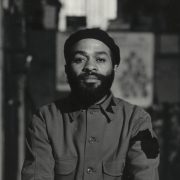

Search for art, find what you are looking for in the museum and much more.
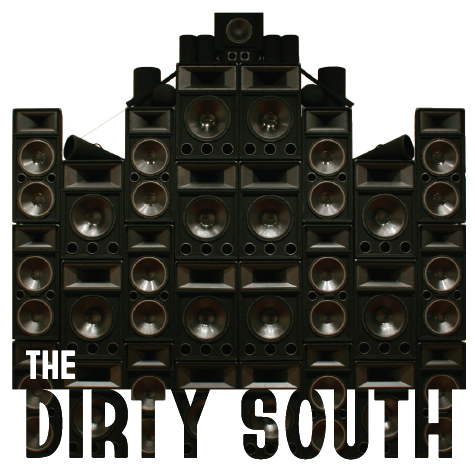
“The South got something to say.”
André 3000
Explore the themes of the exhibition with selected examples of visual artwork and music. Discover how Black artists and musical legends draw upon visual, sonic, and material traditions to unpack what it means to be in and a part of the Dirty South.
Welcome to an online presentation of the exhibition The Dirty South: Contemporary Art, Material Culture, and the Sonic Impulse which opened May 2021. More information about the exhibition can be found on the exhibition page.
The Dirty South: Contemporary Art, Material Culture, and the Sonic Impulse delves into the art, music, and material culture of the African American South, and articulates the ways these cultural expressions have defined contemporary Black Southern sensibilities. Featuring works in various media and disciplines from the last one hundred years, the exhibition explores how the visual and sonic artistic histories have served to represent and characterize the African American South.
The term “the Dirty South” developed as a means to define hip hop music emerging from the Southeastern United States and was quickly understood as an abbreviation for the history and development of Black culture in the South. While the term has been codified in the larger social landscape through the contemporary musical genre of Southern hip hop, it frames a larger narrative of the African American South that is literally embedded in the dirt. The cataclysmic eruption of Southern hip hop from the late 1980s into the 1990s embraced this history and celebrated all things uniquely southern including the landscape, community, spirituality and cultural traditions. The specificity of place is further embraced with the various iterations of southern hip-hop acts like Houston’s DJ Screw and Atlanta’s Outkast receiving national acclaim during this time, the expansion of Black musical expression in the United States became a source of pride and validation among a younger generation living in the South. The music also celebrated generations of cultural traditions of the African American South. Hallmarking this pivotal period was André 3000’s proclamation at the 1995 Source Awards that “the South got something to say”⎯undoubtedly a declaration of the region’s relevance in light of OutKast’s recognition as best new hip hop artists.
The Dirty South exhibition, in a similar way, shines a light on Black Southern ingenuity by underscoring its foundations and transformations through sonic and visual legacies from the past century⎯emphasizing that the South has always had something to say. Featuring visual and musical objects from the 1920s to today, the exhibition ultimately renders visible the constant confluence of static and performative southern Black expressions while also demonstrating their deeply rooted, pervasive, and tenacious existences in the American cultural fabric and consciousness.
The African American South is testament to the resiliency of traditions as well as the hyper-regenerative aspects of culture. The Dirty South looks to expose the foundational and ever-evolving narratives present in visual and sonic manifestations that have sustained communities and cultures over time. Paying particular attention to meditations of landscape, spirituality, and the Black body, the exhibition reveals the rich exchange between visual expression and music. Discover how Black artists⎯both those academically trained and those emerging from the vernacular draw upon the pervasive aesthetic traditions to unpack what it means to be in and a part of the Dirty South.
For over a hundred years, African American artists have looked to the landscape to probe, meditate on, and discern the mysticism of nature and geography for an understanding of the Black self and culture that while deeply rooted, is ever evolving. Southern topography, with its varied flora, undulating landscapes, thickets of trees, swamps, black soil and iron-rich clay dirt provides an almost mythical backdrop to the works featured in the section on landscape. Commonly featured among the works is the region’s natural landscape. The iconic red, clay soil becomes a signifier in the work by artists featured in this exhibition. As with the natural landscape, artists working to frame architecture and sites are also highlighted. Each typifies the ways in which artists have also engaged with the history rooted to the land. Many southern states rose to wealth as agrarian societies with legacies of displacement, forced labor, and later, forced migration. The land is frequently referenced by artists like Minnie Evans, Clementine Hunter, John Biggers and Eldzier Cortor. As such, the landscape can be seen as a protagonist in the long arc of the narrative of the African American South from a site of trauma and labor to a wellspring of life, beauty, spiritual thought, and creative expression.
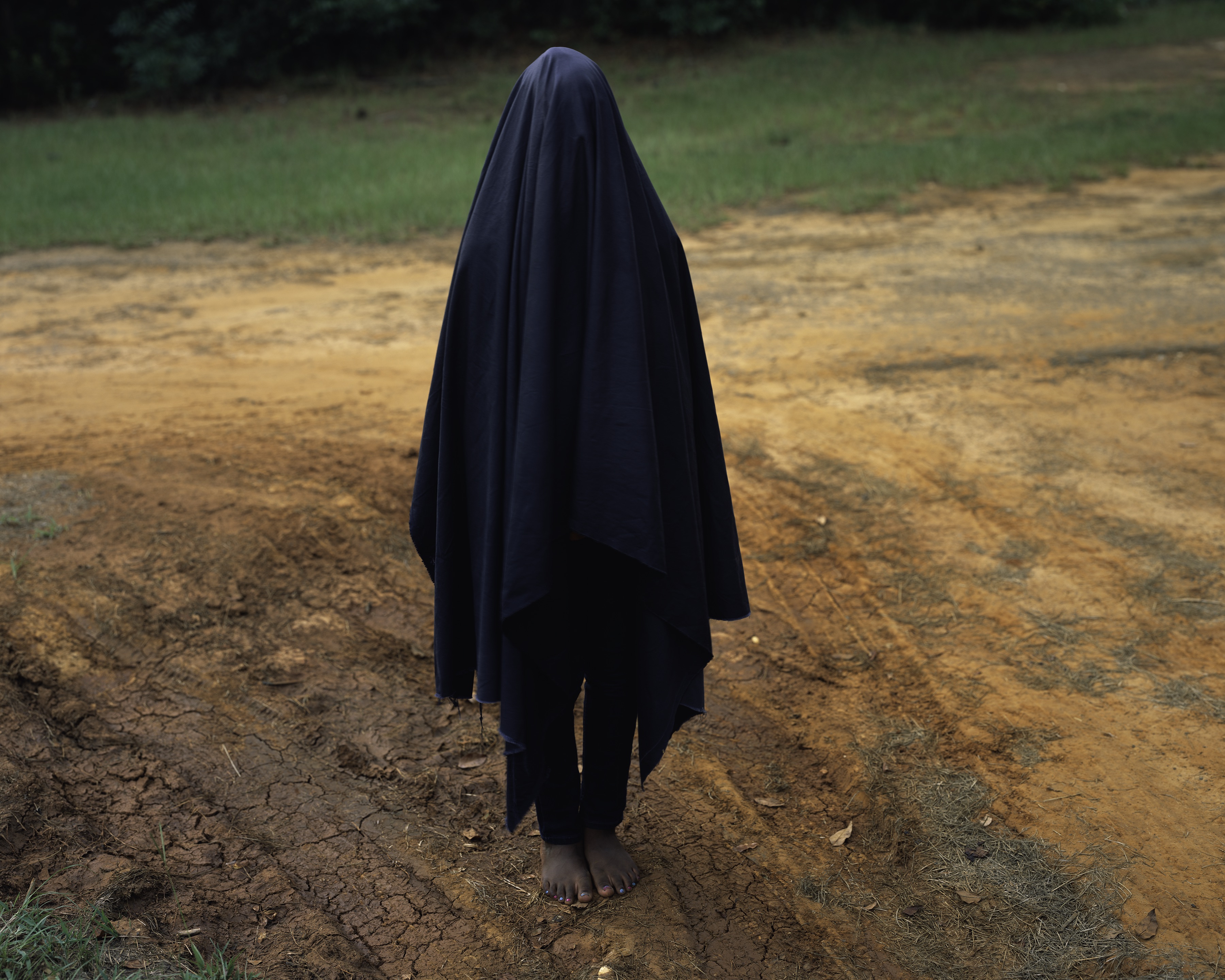
Caspera, 2019, RaMell Ross (American, born 1982), archival pigment print. Virginia Museum of Fine Arts, National Endowment for the Arts Fund for American Art, 2021.112
Through the medium of photography and film, RaMell Ross quietly seeks to untangle the “myth of Blackness” at the root of southern lore. After moving to Hale County, Alabama, in 2009, Ross began taking photographs of people, objects, and the landscape that surrounded him as a way to investigate the relationship of the Black body to the land. Later, Ross would incorporate the moving image camera to record the lives of those living in Hale County, Alabama. The resulting film, Hale County: This Morning, This Evening was hailed as a masterful documentary, uncovering through the banality of the everyday, the complex lives of those living in that African American enclave. Ross embeds that same focus in his photographic body of work that also mines the everyday life of the community. In Caspera, he has incorporated recognizable signifiers of the “Historic South,” such as the red clay dirt, the black body–presumably a young Black child standing in the lush landscape. The figure is hidden but addresses the camera⎯sight without evidence of seeing. The mysticism and myth are two elements that Ross addresses and frames, offering up an alternative lens by which to see the communities of the African American South.
Place is also a central component in Goodie Mob’s “Dirty South”. The group’s music videos often cut to the lush landscape and residential communities where dialects and traditions echo the “Souf.” The group’s iconic hook, “What you really know ‘bout the Dirty South?” directly confronts misconceptions placed upon the region while also balancing an authentic lens into southern Black livelihood through each musicians’ account of their childhood and awareness of place and history.
The song also brings to the fore the realities of the economic disparities and racial segregation having occurred (and continuously occurring) in the South. This becomes especially clear when the video concludes with a white toddler drawing the Confederate Battle flag (aka the “Rebel Flag”) in chalk—quite literally marking onto the land icons of its own history—while accompanying rapper Cool Breeze makes allusions to slavery in his lyrics:
“See in the 3rd grade this is what you told
You was bought, you was sold.”
In one fell swoop, the Atlanta-based group Goodie Mob and company articulate the deep, troubled roots and complexities within the region. They reflect upon persistent legacies that are configured into the contemporary landscape, while examining how contemporary Black bodies navigate the tenuous histories tied to a place they call their own—similar to the message of Ross’s photograph.
Florida-born artist Mildred Thompson began experimenting with the elasticity and dynamism of painting as early as the late 1950s. Her series Wood Pictures not only expanded ideas around the practice of painting but also the genre of landscape painting. Working with pieces of found wood, Thompson combined and assembled wood fragments, using each piece as a gesture of the brush. Drawing upon the wood’s natural grain, she punctuated the picture frame with her compositions that placed one grain strategically against the other. Her work also is about place, with each piece of wood representative not only of the site from which it was taken but also for its connectedness to the larger whole. Thompson’s view on life was metaphysical and she drew upon the principles of interconnectedness, as evidenced here by the intertwining of a man-made object rendered from natural elements.
Born in Richmond, Virginia, Eldzier Cortor spent his childhood in Chicago, where he later attended the School of the Art Institute of Chicago and worked in the WPA’s Federal Arts Project until his move to New York in the 1950s. Southern Landscape, one of three related works created over the same time period, (Remembrances, location unknown; and Southern Flood, 1939–40, Brooklyn Museum) renders an imaginary South after the devastating floods of the 1930s. The painting possesses biblical overtones of cleansing and rebirth, simultaneously alluding to hope, peace, and resolution amid tenuous racial relations in the United States.
The painting also reflects Cortor’s self-identification as a “group painter,” as he saw his life experiences as those of the larger Black collective and thus sought to depict this in his works. The small framed photograph of a man in military uniform among the subject’s basket of possessions exemplifies the artist’s practice as a “group painter.” In this gesture, Cortor attempts to record the success of Black Americans’ militaristic efforts during World War II, although he never enlisted himself. The reference pays homage to the March on Washington movement in 1941, which advocated for desegregation of the U.S. military before the country’s entrance in the war. Though later eclipsed by Martin Luther King, Jr.’s March, the original march helped cite the under-recognized heroic efforts of African Americans in World War I, most notably the 369th Infantry Regiment, dubbed the “Harlem Hellfighters,” who received France’s coveted Croix de Guerre for bravery.
The song “Didn’t It Rain” performed by the godmother of rock ’n’ roll, Sister Rosetta Tharpe, similarly alludes to spirituality and faith in the future via natural motifs of landscape, rain, and flooding. Originally a work song and African spiritual, the tune recounts the biblical story of the Flood, a tale of condemnation and redemption through the cleansing and regenerative qualities of God’s rainfall. Tharpe’s charismatic playing of the guitar playing, an instrument attune to the “Devil’s music,” thus becomes an acute counterpart to her raspy, vibrato vocals recalling tales of the Almighty. A sincere rule-breaker, Tharpe not only radically combined the sacred and secular in her songs like “Didn’t It Rain,” but also became a pioneering figure of rock ’n’ roll, most profoundly as a female innovator in a time when the genre was dominated and articulated by men.
A common element of both Southern Landscape by Cortor and Sister Rosetta Tharpe’s 1964 performance is the overarching setting. While Tharpe’s performance is in Manchester, England, the stage set represents a sharecropper’s porch in early twentieth-century American South—a reference to her childhood in Alabama picking cotton—evoked in much of the work around the southern landscape.
Spirituality and belief systems in the African American South embody a complex, intertwined network of philosophies from West African, European, and Indigenous American spiritual traditions. Drawing upon the harsh realities of enslavement, the enduring hardships brought by racial discrimination, the mysticism of the landscape, African traditions inherited from prior generations, and the Christian faith, the region has witnessed various manifestations of spiritual thought. Spiritual “sightedness” and visions as well as a sense of simultaneity, “twining” or understanding the duality of self (as of two minds) are just a few modes through which Black southerners practice spirituality. Visual artists such as Minnie Evans and Sister Gertrude Morgan embody the former, acting upon their spiritual transcendence through creative endeavors.
These belief systems also often embrace notions of liminal space, the portal between the physical and spiritual worlds. One of the hallmarks is expressive transference—the embedding or infusing a static object with spiritual embodiment, supernatural power, or a performative inference. The objects themselves serve to protect, empower, or project the spiritual, as explored within the object-based work She Kept Her Conjuring Table Very Neat by Renee Stout.
As with syncretic religious practices and Christianity, aural leanings have followed a similar nature of amalgamation—from the slowing of time in DJ Screw’s “chopped and screwed” sound to the bending, blues-like organ in Roberta Martin’s gospel to Sister Gertrude Morgan’s upbeat acapella and tambourine rhythms reminiscent of African sounds and sermons. Sinners and Saints speaks to the spiritual multiplicity experienced throughout the African American South, where the believers and the faithful both sanctify and reckon with the plight of the times through their belief systems and practices.
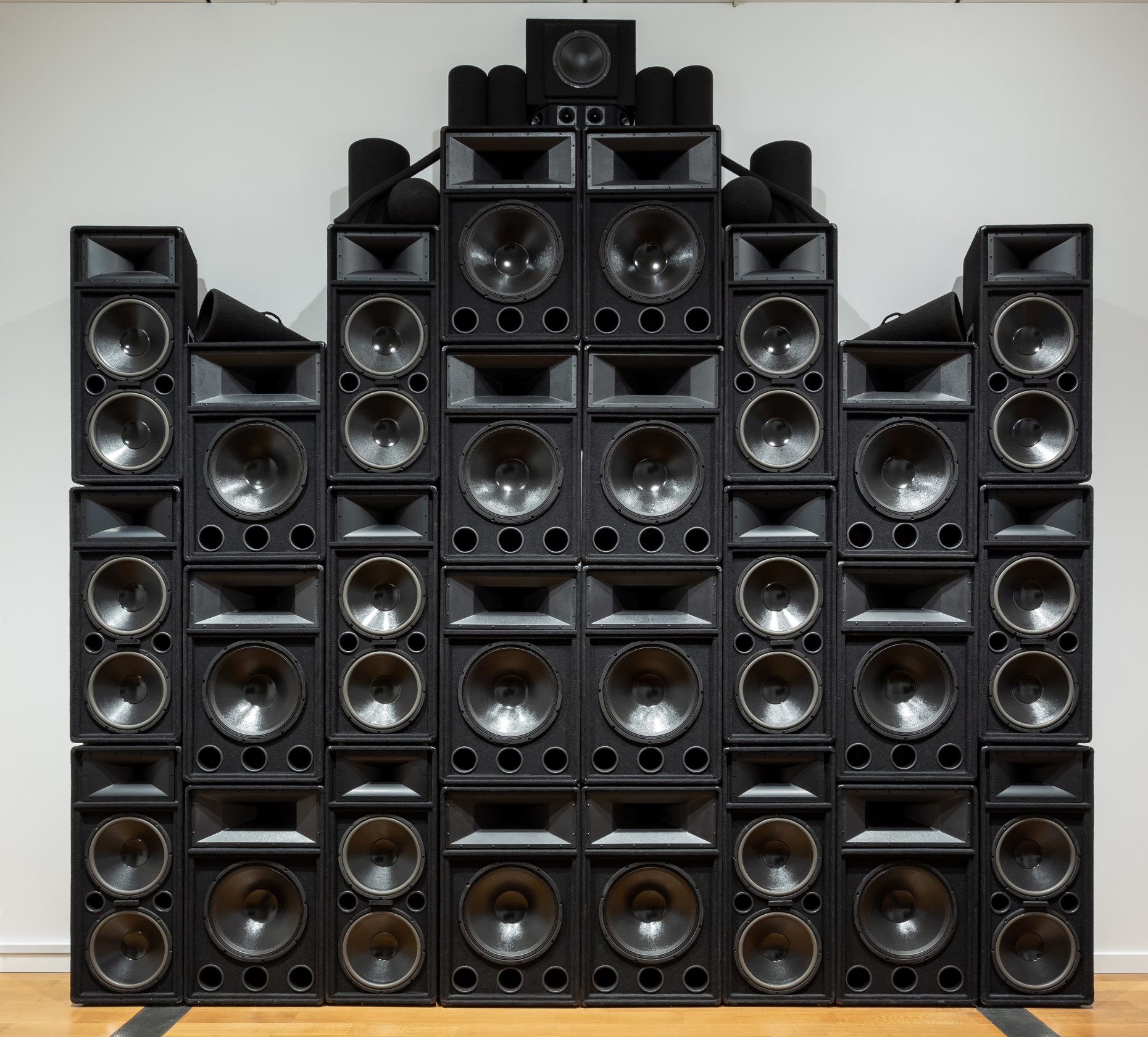 Coronation Theme: Organon, 2008, Nadine Robinson (American, born England, 1968), speakers, sound system, mixed media. High Museum of Art, Atlanta, given by John F. Wieland Jr. in memory of Marion Hill, 2008.175
Coronation Theme: Organon, 2008, Nadine Robinson (American, born England, 1968), speakers, sound system, mixed media. High Museum of Art, Atlanta, given by John F. Wieland Jr. in memory of Marion Hill, 2008.175 Through her monumental sonic sculpture, artist Nadine Robinson addresses complex narratives and historic moments through sound. The sculpture, composed of thirty speakers, is designed to resemble the pipe organ of a European cathedral as well as mirror the facade of Atlanta’s historic Ebenezer Baptist Church, where Reverend Martin Luther King, Jr. served as co-pastor until his assassination in 1968. Coronation Theme: Organon was inspired by a 1963 Project C (Confrontation) demonstration in Birmingham, Alabama, where nearly one thousand children and young adults were attacked by dogs and fire-hosed by police for peacefully protesting segregation. With this work, the artist produced a sonic portrait of the moment. The audio played through the sculpture—featuring choral music, distorted sounds of pressurized water, screams, barking dogs, as well as fragments of sermons, songs, prayers, and protests—is a composite of that critical history. The work also includes an anthem by German composer Handel from which the piece takes its name.
Mirroring Robinson’s concepts of spirituality and peaceful protest is the song “We Shall Not Be Moved (We Shall Overcome),” most notably performed by the Freedom Singers at the 1963 March on Washington. The tune, particularly the lyric on “overcoming,” originated from a work song in which enslaved Africans and African Americans sang “I’ll be alright someday.” It later metamorphosed into “I’ll Overcome Someday” in 1901 after the Maryland Methodist minister Charles A. Tindley published the tune as a spiritual, inspiring the song’s integration into Christian institutions throughout the country. By the 1940s, southern Black youth often a part of college student councils performed the song during civil rights protests. The Freedom Singers was composed of students in the Georgian Student Non-Violent Coordinating Committee (SNCC), which included Cordell Reagon, Charles Neblett, Rutha Harris and Bernice Johnson-Reagon. It was at this time that the tune transformed from “I” to “We,” as a gesture acknowledging the collective plight and struggle of the Black community and all who fight racial injustices. The spiritual was carried throughout the South during the civil rights era, serving as a unifying force imbued with hope and faith.
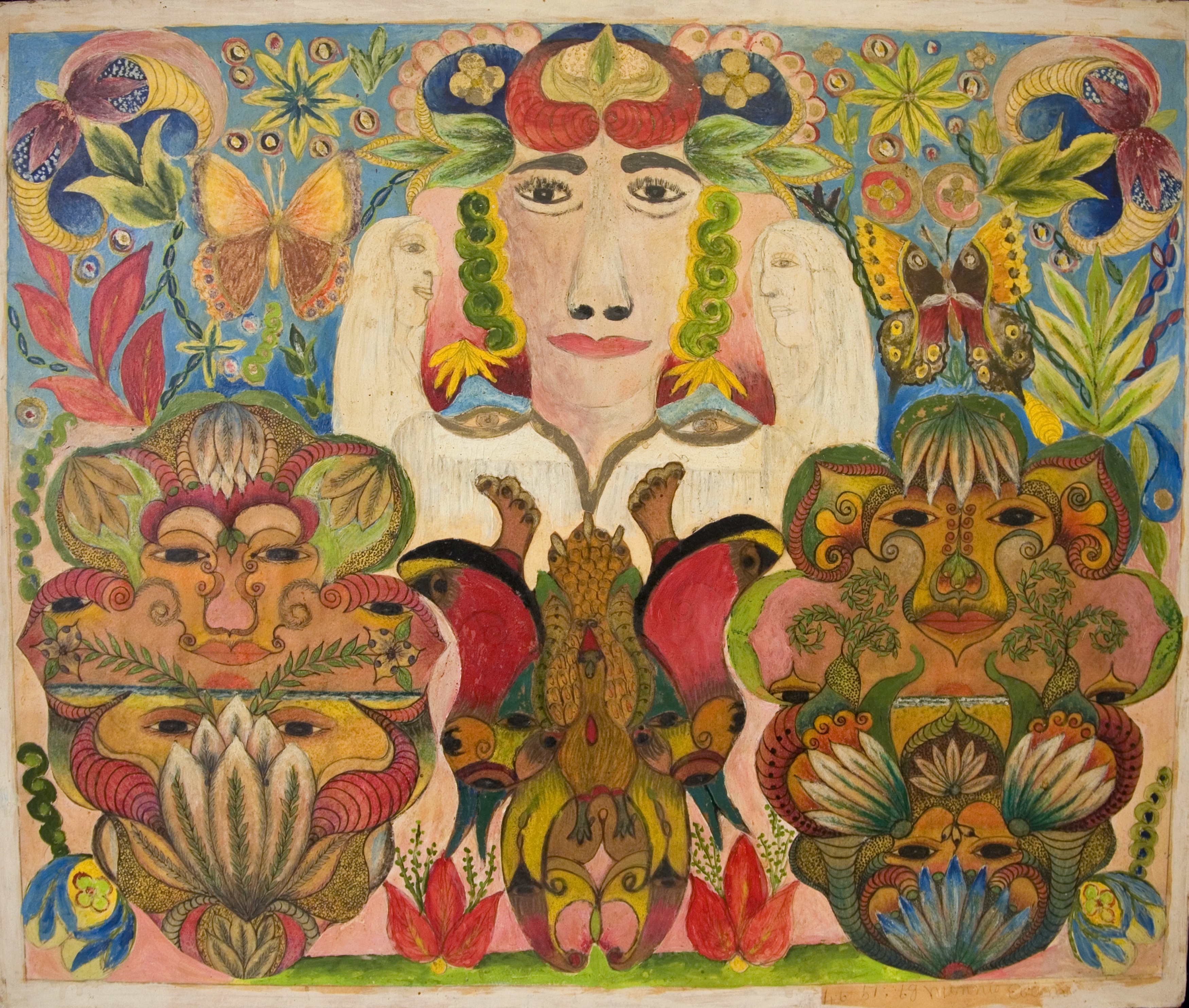
Untitled, Minnie Evans (American, 1892 - 1987), collage, oil on paperboard. Image courtesy of Luise Ross Gallery, New York
Minnie Evans came to drawing and painting later in life, when in 1935 at the age of forty-three, she received a spiritual revelation on Good Friday during which a voice told her she must “draw, or die.” Her religious devotion and spirituality became central themes in her work, alongside that of nature. Her place of work at the Airlie Gardens in Wilmington, North Carolina, where she served as gatekeeper until the age of eighty-two, further inspired Evans’s creativity while simultaneously providing a platform for her to display and sell her artwork to visitors. This distinct presence at the Airlie Gardens inspired great recognition and promotion of her work, even the attention of art historian Nina Howell Starr.
Often painting while at work, Evans infused the sacred into her pieces, melding landscapes with human faces, ethereal beings, God, and flora. The imagery balanced a layering of otherworldly motifs, such as disembodied eyes suggestive of a divine presence, to speak to this merging of the physical and spiritual worlds. Nature functions in Evans’ works as a spiritual respite, while also serving as reference to a person’s spiritual cleansing, rejuvenation, and blossoming or awakening—mirroring the artist’s own spiritual journey and transcendence.
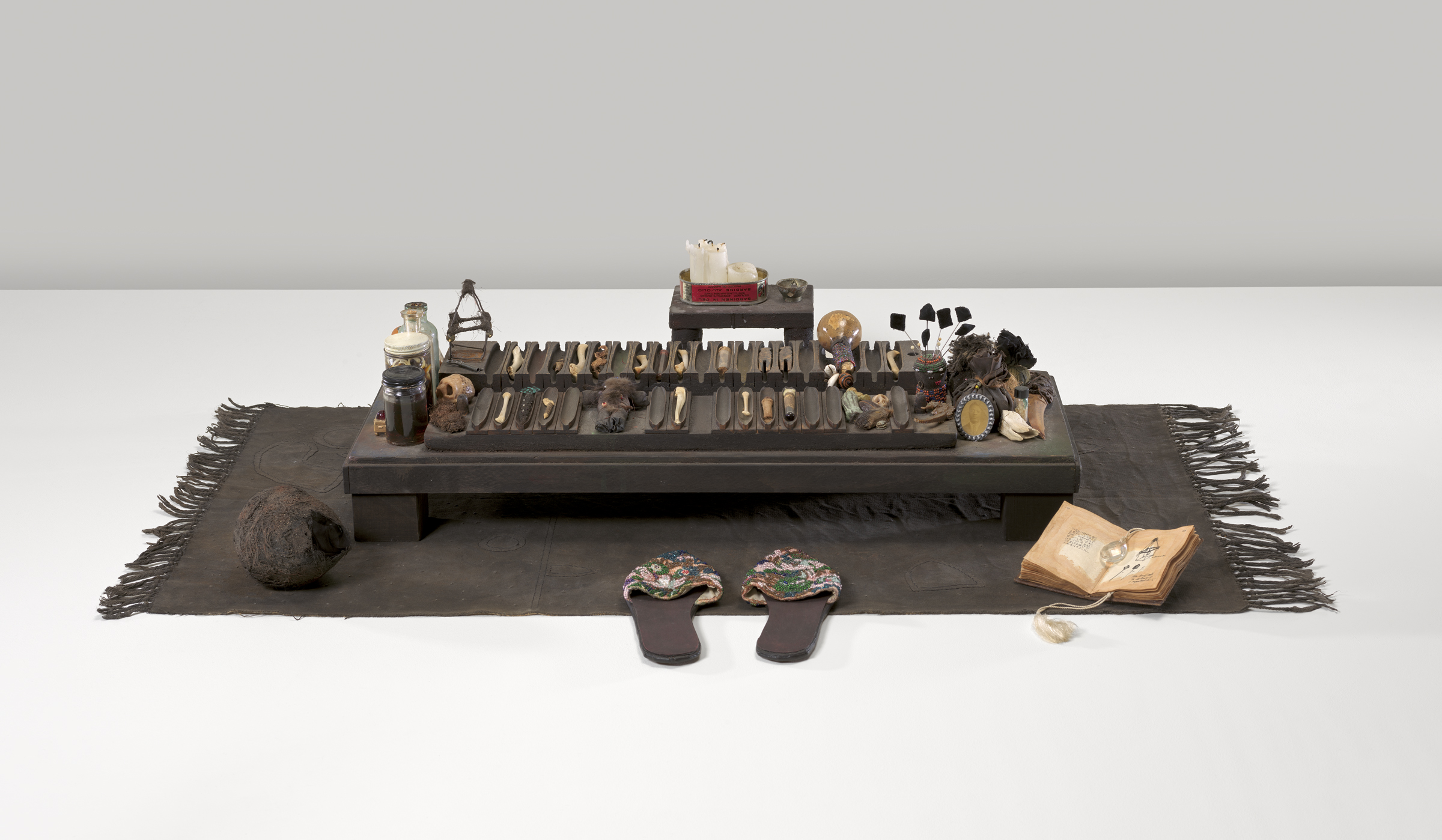
She Kept Her Conjuring Table Very Neat, 1990, Renee Stout (American, born 1958), mixed media. Virginia Museum of Fine Arts, Adolph D. and Wilkins C. Williams Fund, by exchange, 2020.21
Artist Renee Stout has built a signature practice that throws into stark relief syncretic religious practices found throughout the African American community, but particularly those in the South. Created with found and constructed objects, Renee Stout’s work is a testament to her long-held fascination with the presence and translation of West African religious traditions in the African American South. Her rendering of the tradition’s ornamentation and instruments speak to the often unseen rituals that seek to harness spiritual power in our contemporary lives. Stout’s early work is built around several narratives that the artist developed through the creation of fictional characters and alter egos that revolve around spirituality, ritual and love. Through this lens, Stout shows us her character’s conjuring table as both intimate space, and performance spectacle. On the table, slightly lifted from the floor, an array of small, but potent items are placed carefully in their designated spots, as if to activate the forces necessary to facilitate some sort of sacred communication. An adorned pair of shoes is placed directly in front of the table, identifying this space as one of reverence.
Rita Mae Pettway is part of a group of quilters known today as the Gee’s Bend Quilters Collective. Gee’s Bend, later renamed Boykin, is a town located southwest of Selma, Alabama. Many of the quilters were and are direct descendants of enslaved Africans. Secular and sacred are intertwined in Gee’s Bend quilts. Born from necessity, this tradition functioned on practical and aesthetic levels. As many then lived in unheated shacks, quilters made these textiles for warmth and utility. The fabrics, composition and modes of production, however, are also evidence of community, belief systems and visual traditions handed down from one generation to the next. In Housetop (named for the pattern), the push and pull of the lines and color can be framed as “call and response,” a technique in music and religious worship that migrated through channels of the African Diaspora. With alternating colors, each side of this quilt seems to call back and forth to each other as the symmetry of the square is broken and misaligned. This willful misalignment of the pattern functions to trap evil, which was believed to travel in a straight line. Drawing upon aesthetic legacies, creative vision, and patterns from the world around them, these quilters have constructed some of the most iconic textiles of the African American South.
A sonic equivalent to Housetop’s visualized call-and-response technique can be heard in Thomas A. Dorsey’s “If You See My Savior, Tell Him That You Saw Me,” created around 1928. While Dorsey sings a melodic tune underscoring his Christian devotion and perception of the afterlife, he is accompanied by a harmonic partner who recites or elaborates on his previously sung phrase, an undoubtable gesture of “call and response.” Dorsey, born in rural Georgia, became an influential composer, musician, Christian evangelist, and key innovator of the early 1920s gospel blues movement. Throughout his career, he worked with such figures as Ma Rainey (1886-1939), Sallie Martin (1895-1988), Mahalia Jackson (1911-1972), and Roberta Martin (1907-1969), many of whom later reproduced his songs in their iconic styles. His ingenious compositions crowned him the “Father of Gospel Music” and were essential to the development of gospel blues played within African American churches and beyond.
Black corporeality underscores the body as the repository of tradition, inventor of creative expression, generator of joy, object of brutality and agent of resistance. In this section, artists of multiple generations meditate on the Black body as the embodiment of history, experience, and aesthetic traditions. Drawing upon the past, present, and future, the Black body in the context of this exhibition fuels a greater understanding of how the corporeal precariously balances trauma, resistance, joy and an insistence on not only the survival, but thriving of the Black community. Throughout the myriad of works featured, the primary construct of the Black body as only the subject of historical trauma is complicated by also asserting that same body as a creative force that resists subjugation. While trauma dominates the historical narrative around Black bodies in the southern United States, this section celebrates narratives of resistance, resilience, and transformation as well as joy, as seen with Rashaad Newsome’s King of Arms and Deborah Roberts’s Let Them Be Children. The works thus denote the precarious balance between Black empowerment and vulnerability. These works also feature the invisible, intimate, and interior lives that dispel myths, including the idea of a monolithic framing of Blackness. The complexity of defining Blackness lies in the ever-changing, hyper-regenerative nature of not only the Black body but also of culture as expressed in creative outputs of music, movement, and language—an ideation particularly explored by the nonfigurative, object-based sculpture of Radcliffe Bailey. Accumulation, assemblage, and the use of nontraditional materials are seen in a range of exhibited works, continuing a rich tradition that has remained deeply aligned with the African American condition and creative expression for over a century.
While a physical, visual form, Black corporeality within the South has nonetheless been explored within sonic culture. Similar to their visual arts counterparts, musicians and their passionate, soul-reflective lyrics coupled by keen music videos embrace themes of the Black body as physical records of African American history, creativity, pride and resiliency.

Let Them Be Children, 2018, Deborah Roberts (American, born 1962), acrylic, pastel, ink, and gouache on canvas. Virginia Museum of Fine Arts, Arthur and Margaret Glasgow Endowment, 2019.1
Texas-native Deborah Roberts investigates the impact of social constructs upon an individual’s identity. In Let Them Be Children, Roberts uses collage, mixed media, drawing and painting on the canvas to examine the preservation of innocence and well-being of young, Black children as they seek to build their own identities while navigating society’s preconceived constructions of race placed upon their bodies.
Roberts’s fragmented ensemble of children has a dynamic liveliness to it. Arms and legs jut out at varying angles and at times interlock, suggesting child-like movement or playfulness. However, Roberts subtly complicates the composition by sprinkling in a few facial expressions of wariness or solemnity , reminding the viewer of the social pressures placed on children as well as the perception of Black children as being older and subsequently, responses to them much harsher.
The rippling effects of the socio-political landscape on the formulation of Black identity is powerfully confronted in the funk anthem of Black self-determination, “Say It Loud, I’m Black and I’m Proud” by Godfather of Soul and Georgian-native, James Brown. Produced in 1968, Brown created the song alongside composer Belford “Stinky” Hendricks as an anthem to promote Black empowerment and resiliency in an age of prejudice against Black Americans. An apt juxtaposition to Roberts’s work, Brown also incorporates a youthful choir group who responds to his demand “Say it loud” with the chant “I’m Black and I’m proud”—a nod to the call and response practice heard within gospel and African musical traditions. This musical and visual pairing presents a broad spectrum of identity politics upon the Black body, from the pressures to succumb to society’s expectations to self-appreciation and empowerment.
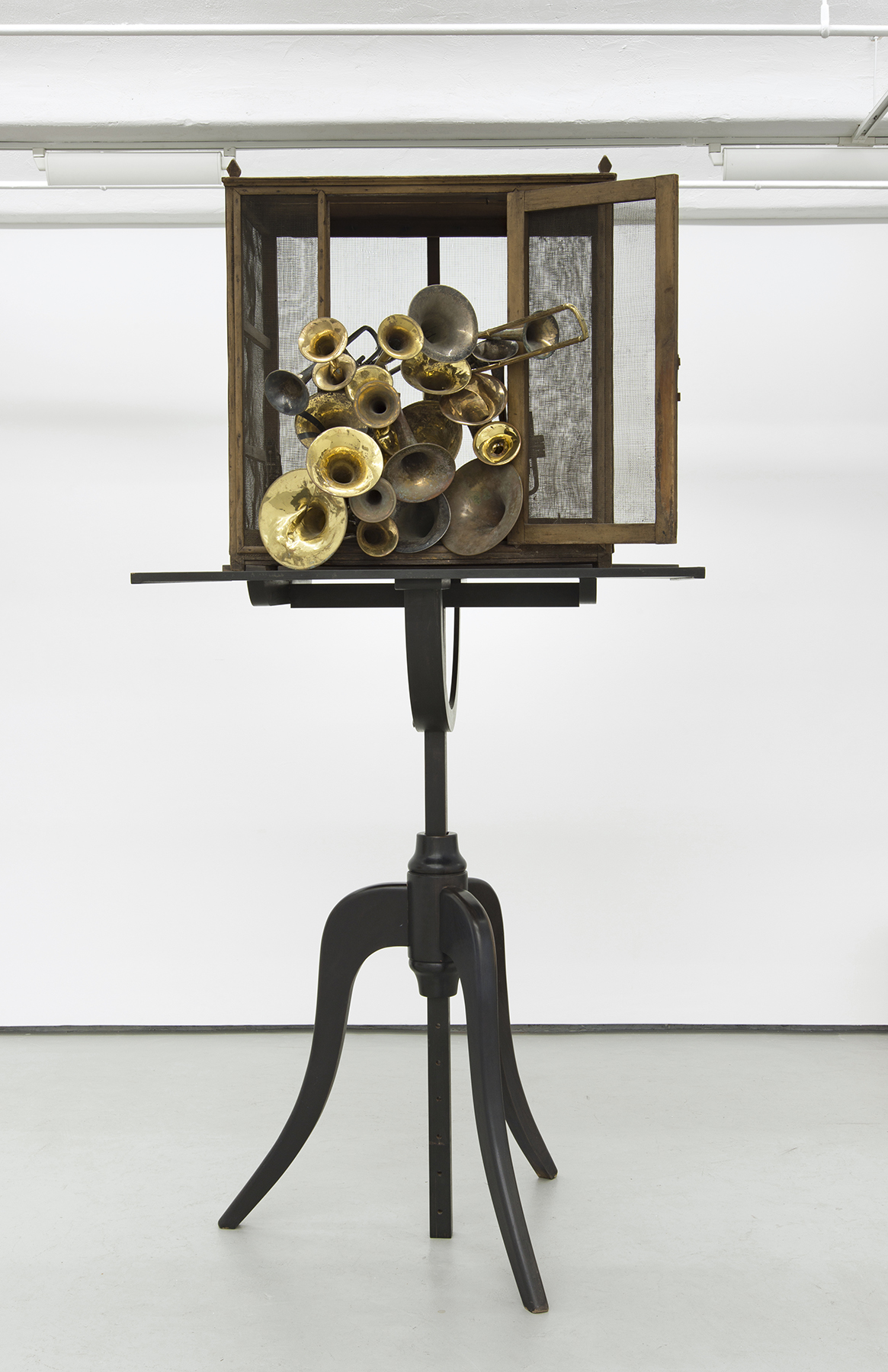 If Bells Could Talk, 2015, Radcliffe Bailey (American, born 1968), wood, trumpets, trombones. Collection of Martin Z. Margulies
If Bells Could Talk, 2015, Radcliffe Bailey (American, born 1968), wood, trumpets, trombones. Collection of Martin Z. Margulies Radcliffe Bailey, a contemporary artist based in Atlanta, is deeply invested in framing the histories of Black bodies in the American South. Bailey looks to music and sound that—like history—acknowledges, honors, and moves forward the Black body through time. In this work If Bells Could Talk, the artist pays particular attention to material culture as physical means to represent Black expression and culture of the South. He assembles a sculptural bouquet of brass instruments that spill out of an antique, wooden birdcage sitting on top of a nineteenth-century music stand. Its instrumental elements–found in the aftermath of Katrina in the Lower Ninth Ward of New Orleans– serve to symbolize the near destruction of musical traditions in the city’s historic African American neighborhood. The history of jazz and other brass-oriented genres were all sounds of which were innovated or popularized by Black figures in the South. Artists ranging from New Orleans native Louis Armstrong to the Marsalis musical dynasty signify the longstanding tradition of music to the city and the city’s Lower Ninth Ward in its continued presence.
Similar to Bailey’s artwork in regard to the dynamic embodiment and preservation of Black musical traditions is the sonic composition “Work Song” by Cannonball Adderley’s Quintet. This tune was inspired after Cannonball’s brother and trumpeter, Nat Adderley, observed a group of convict laborers singing while paving the streets of their childhood neighborhood in Florida. The composition’s focus on the horn pairs seamlessly with Bailey’s sculpture as the two works pay tribute to Black musical expressions. Adderlery’s distinct, explosive cornet solos and Bailey’s bouquet of horns demonstrate the resiliency, joy, and power of the Black experience throughout time.
Rashaad Newsome’s video installation, King of Arms features an ornate, gilded frame draped with the artist’s designed drapes. The embellished frame conjures grand traditions of theatrical performance that resonates in the rapid-fire images of a grand procession–the coronation of the artist himself as “king.” For this video installation, the New Orleans-born Newsome explored themes of pageantry, ornamentation and the rituals of heraldry in the traditions of Mardi Gras, marching bands and queer culture. As such, he seamlessly blends imagery, movement, and spectacles ranging from Mardi Gras krewes to “vogueing” from the queer ballroom scenes of the 1990s and 2000s. Through reimagining conceptual approaches to power, Newsome fashions a new cultural framework, one that promotes empowerment, innovation and inclusion of the queer Black body in the discourse of contemporary society.
As a performance, King of Arms seeks to fuse the art world with the opulent ballroom scene of queer culture. This engagement is imbued with the complexity of traditions of the African American South that also includes a high school marching band and a Black Indian krewe from New Orleans. Newsome welcomes collaboration from a range of leaders in the worlds of art, fashion, music, and activism, providing them with a platform for creative expression. His art especially serves as a space for LGBTQ voices and communities of color to shape their own representation and be celebrated through pageantry and performance.
Noted for its Afro-futuristic, experimental style, Missy Elliott’s “Supa Dupa Fly” similarly declares space and freedom of expression, yet specifically for the Black female body and voice. Created in 1997, a time in which sexual positivity of the female form varied greatly across the music industry, Supa Dupa Fly envisions a distinct, futuristic world for womanhood and Black experiences. Countering Rashaad’s King of Arms, Elliott de-centers the over-sexualized female body through fantastical, androgynous costumes and forms rounded out by the fish-eye lens’ obfuscation. The two works nonetheless successfully blur constructs of the Black body.
Rashaad and Elliott also share an interest in staccato movements and rhythms, with each having up-beat drums and dancers performing jutted, short gestures. Pageantry and luxury are similarly explored in the two works, as evidenced in their focus on theatrical stages as well as their application of material culture from high-end cars to elaborate costume designs.
The Virginia-born, multi-talented artist, Missy Elliott broke through the male-dominated world of hip-hop with her creative blend of samples across genres including disco, bump ’n’ grind electronica, and digital beats. Her decades-long collaboration with Timbaland has resulted in an innovation of sound, image and movement in contemporary Southern hip hop. Her debut solo, “Supa Dupa Fly” serves as a testament to Elliott’s creativity and ingenuity, as she not only challenged prescriptions placed upon the Black female body in the genre of hip hop, but also the redundancy of content heard in hip-hop of the 1990s that boasted of street life, violence and sex. Her music settled beyond these typical impulses, and provided an avant-garde, refreshing take on Blackness in both its visual and sonic manifestations.
VMFA commissioned multimedia artist, composer, and writer Paul D. Miller (aka DJ Spooky) to produce original music and playlists inspired by The Dirty South. Listen to his sonic collage work available in the Museum Shop, or click here for his curated Spotify playlist.
VMFA hosted a series of talks in conjunction with The Dirty South: Contemporary Art, Material Culture, and the Sonic Impulse. These virtual conversations between scholars, curators, and visual and musical artists explore poetry, visual and sonic culture, contemporary southern hip-hop, and legacies of traditional southern aesthetics.